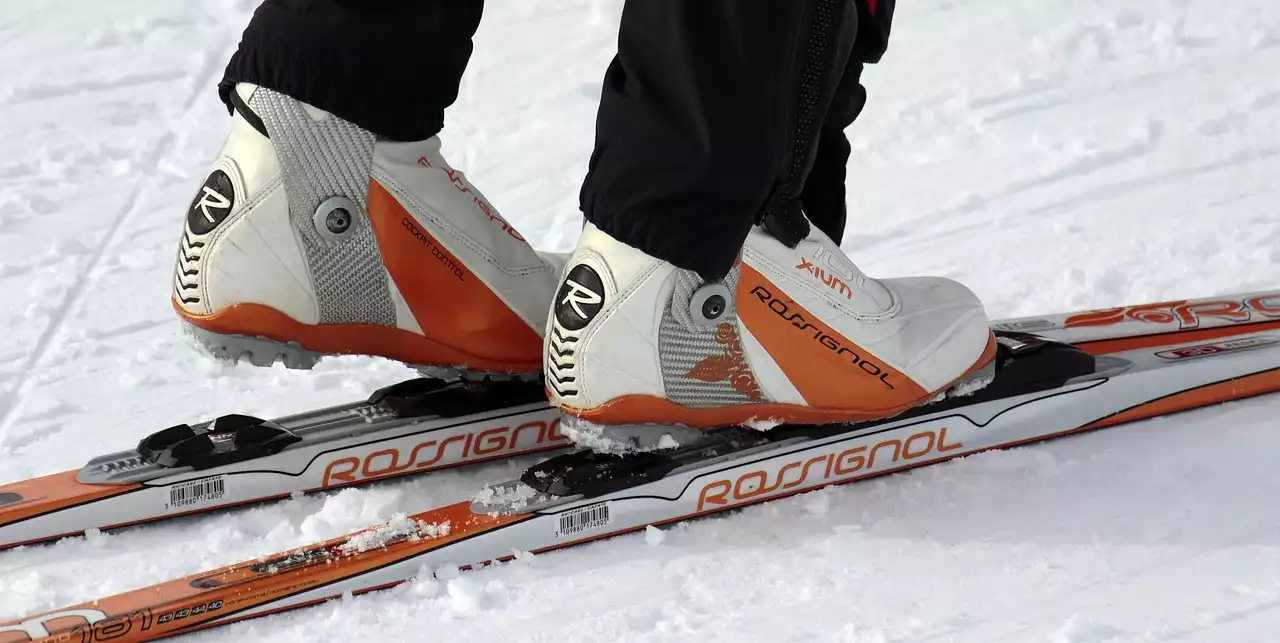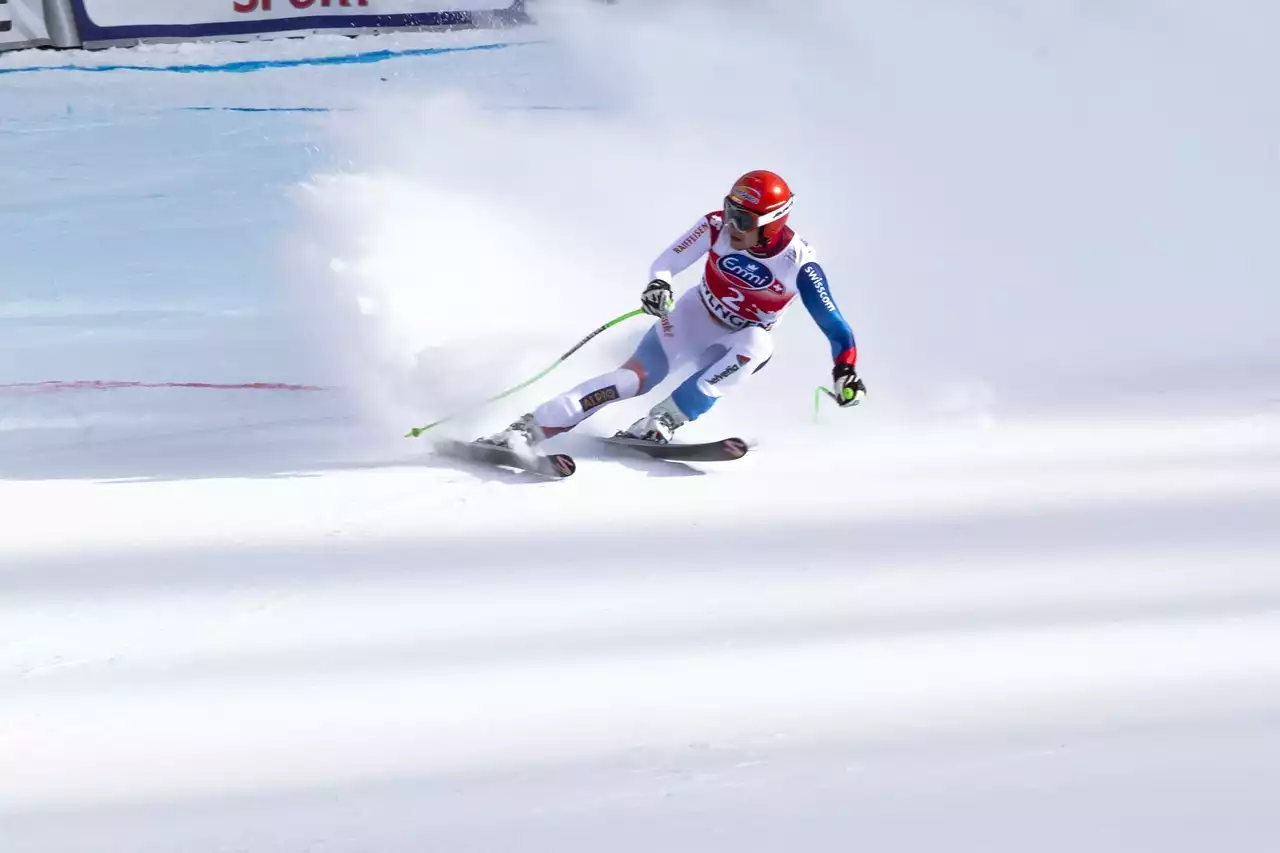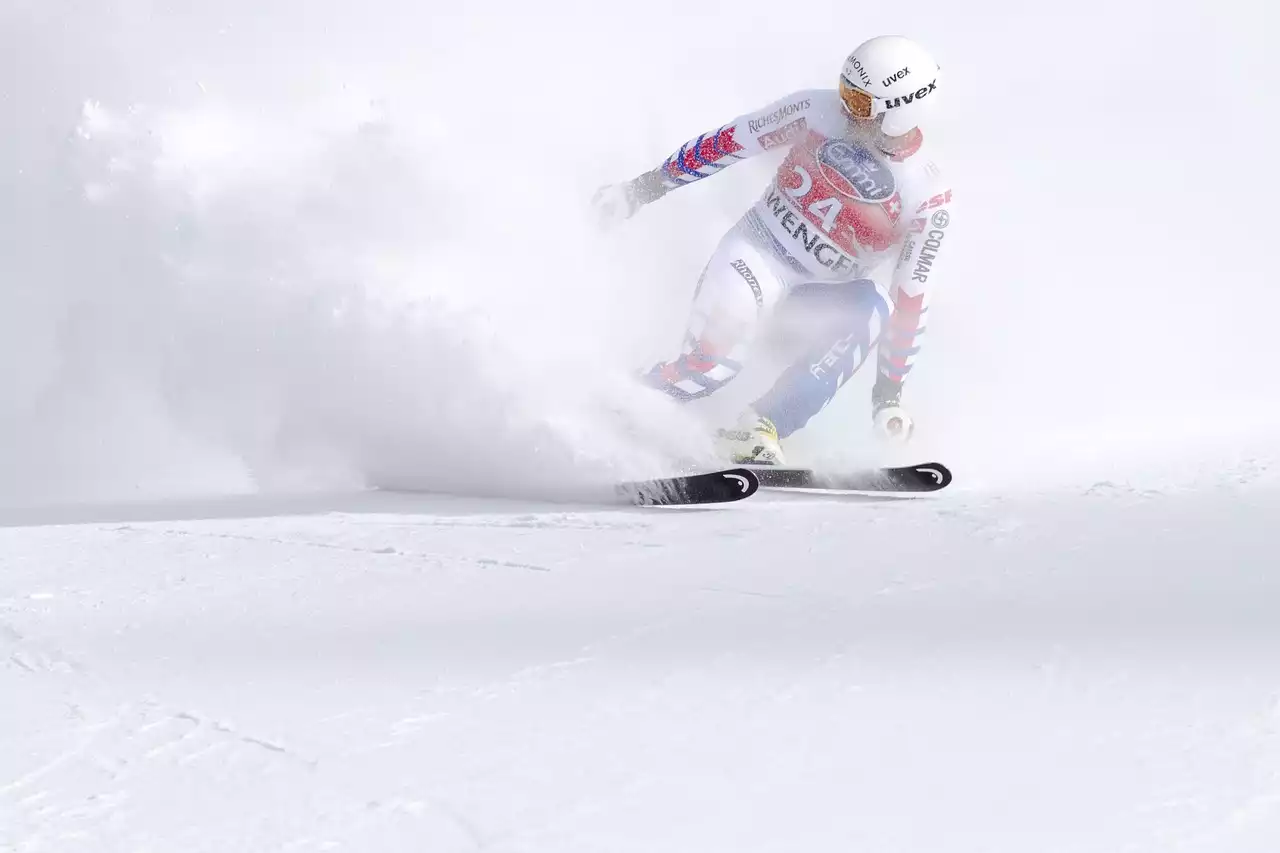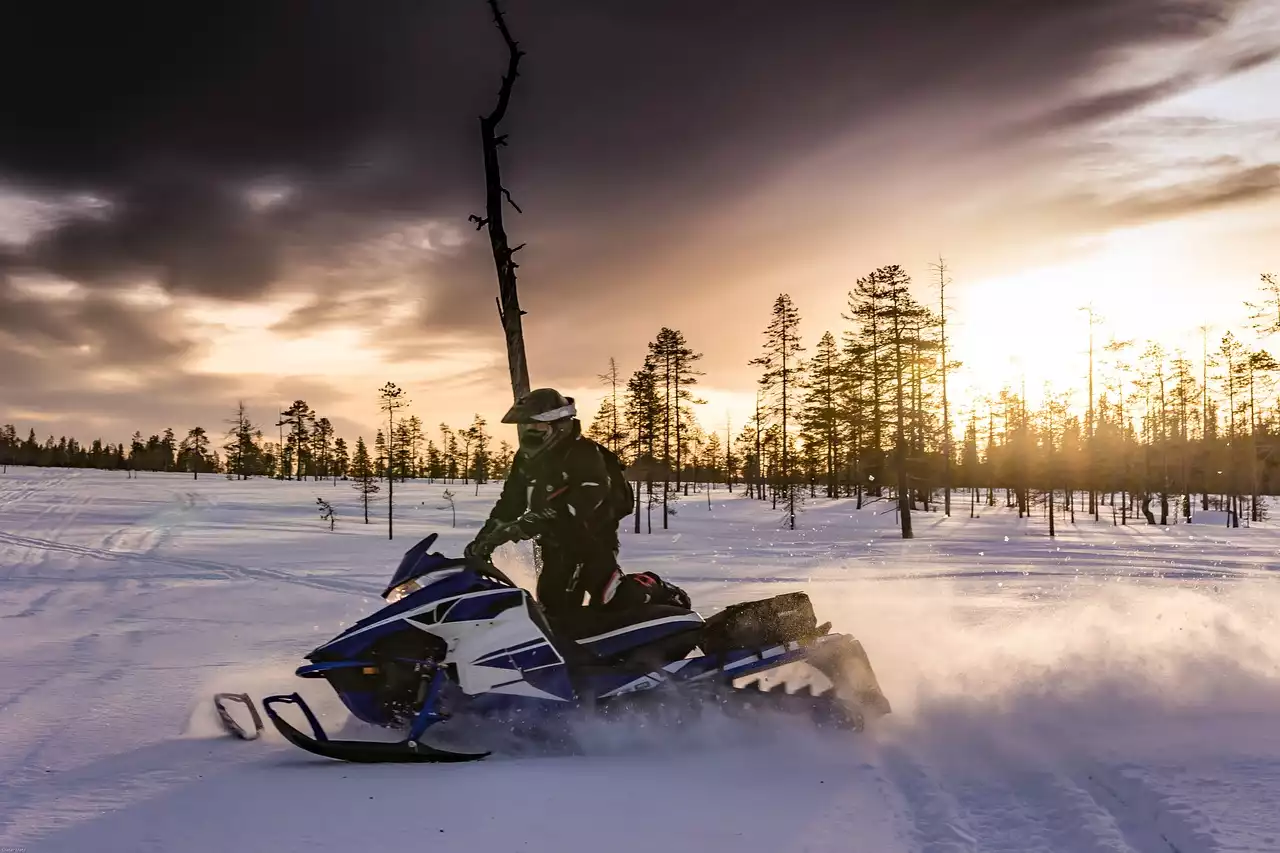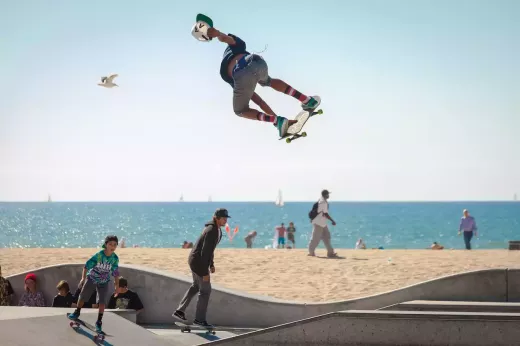Benefits of Downhill Skiing
Downhill skiing offers a multitude of benefits for both the mind and body. Not only does it provide an exhilarating adrenaline rush, but it also offers a fantastic full-body workout. As you navigate the slopes, your leg muscles are constantly engaged, helping to build strength and endurance. Additionally, skiing involves a great deal of balance and coordination, which can improve your overall proprioception and body awareness. The combination of physical exertion and the serene beauty of the mountainous landscapes can also have a positive impact on your mental well-being, reducing stress and increasing feelings of happiness and relaxation. So, whether you're looking for a thrilling adventure or a way to stay fit during the winter months, downhill skiing has something to offer everyone.
Safety Tips for Downhill Skiing
While downhill skiing is an exciting and enjoyable activity, it's important to prioritize safety to ensure a fun and injury-free experience on the slopes. Here are some key safety tips to keep in mind:
1. Wear appropriate protective gear: Always wear a helmet to protect your head in case of a fall or collision. Additionally, make sure to wear goggles to protect your eyes from wind, snow, and glare.
2. Stay within your skill level: Be honest with yourself about your skiing abilities and stick to slopes that match your skill level. Trying to tackle slopes that are too advanced can lead to accidents and injuries.
3. Follow the rules and signs: Pay attention to the signs and markings on the slopes, and obey the rules and guidelines set by the ski resort. These are in place to ensure the safety of all skiers.
4. Stay hydrated and take breaks: Skiing can be physically demanding, so it's important to stay hydrated and take regular breaks to rest and recharge.
5. Be aware of your surroundings: Always be aware of other skiers around you and give them plenty of space. Avoid sudden stops or erratic movements that could cause collisions.
By following these safety tips, you can minimize the risks associated with downhill skiing and enjoy a safe and enjoyable experience on the slopes.
Choosing the Right Equipment for Downhill Skiing
Selecting the right equipment is crucial for a successful and enjoyable downhill skiing experience. Here are some key considerations when choosing your skiing gear:
1. Skis: The type of skis you choose will depend on your skill level and skiing style. Beginner skiers should opt for shorter and more forgiving skis, while advanced skiers may prefer longer and more aggressive skis. Make sure to choose skis that are suitable for your weight and height.
2. Bindings: Bindings are the mechanism that connects your boots to the skis. It's important to ensure that the bindings are properly adjusted to your boots and that they release correctly in case of a fall or sudden impact.
3. Boots: Ski boots should fit snugly and provide adequate support to your feet and ankles. They should be comfortable and allow for precise control over your skis.
4. Poles: Ski poles help with balance and provide additional propulsion on flat sections. Choose poles that are the correct length for your height.
5. Helmet: As mentioned earlier, wearing a helmet is essential for protecting your head from potential injuries. Make sure to choose a helmet that fits well and meets safety standards.
When in doubt, consult with a professional at a ski shop who can guide you in selecting the right equipment based on your skill level and skiing goals.
Mastering the Basic Techniques of Downhill Skiing
To become a proficient downhill skier, it's important to master the basic techniques. These fundamental skills will form the foundation for more advanced maneuvers. Here are the essential techniques to focus on:
1. Stance and balance: Maintain a balanced and athletic stance with your knees slightly bent and your weight centered over your skis. This will provide stability and control as you navigate the slopes.
2. Turning: Practice making smooth and controlled turns by shifting your weight from one ski to the other. Start with wider turns and gradually progress to tighter turns as your skills improve.
3. Edging: Edging refers to the angulation of your skis on the snow. By applying pressure to the edges of your skis, you can control your speed and direction. Practice edging by gradually increasing the angle of your skis as you carve turns.
By dedicating time to mastering these basic techniques, you'll build a solid foundation for more advanced skiing maneuvers and gain confidence on steeper slopes.
Advanced Techniques for Experienced Skiers
For experienced skiers looking to take their skills to the next level, there are several advanced techniques to explore. These techniques will allow you to navigate challenging terrain with precision and style. Here are some advanced techniques to consider:
1. Carving: Carving turns involves creating clean, arcing turns by engaging the edges of your skis and allowing them to slice through the snow. This technique requires precise weight distribution and finely tuned edge control.
2. Mogul skiing: Moguls are large, bumpy mounds of snow that form naturally on advanced slopes. Mastering mogul skiing involves learning how to absorb the bumps, maintain balance, and make quick, controlled turns.
3. Off-piste skiing: Off-piste skiing refers to skiing on ungroomed and unmarked terrain outside of the designated slopes. This type of skiing requires advanced navigation skills, as well as knowledge of avalanche safety and backcountry etiquette.
These advanced techniques require practice, patience, and a willingness to push your limits. Consider taking lessons from a professional instructor to ensure that you learn and execute these techniques correctly.
Tips for Improving Your Downhill Skiing Skills
In addition to mastering the techniques, there are several tips and strategies that can help you improve your downhill skiing skills. Here are some suggestions to consider:
1. Take lessons: Whether you're a beginner or an experienced skier, taking lessons from a certified instructor can provide valuable feedback and guidance. An instructor can help identify areas for improvement and provide personalized tips to help you progress.
2. Ski with more experienced skiers: Skiing with skiers who are more advanced than you can inspire and challenge you to improve. Observe their technique and try to replicate their movements on the slopes.
3. Practice regularly: Like any skill, regular practice is key to improvement. Make time to hit the slopes as frequently as possible to reinforce the techniques and build muscle memory.
4. Record and review your skiing: Use a video camera or smartphone to record yourself skiing. Reviewing the footage can help you identify areas for improvement and make adjustments to your technique.
5. Stay physically fit: Engage in exercises that improve your strength, flexibility, and cardiovascular fitness. A strong and conditioned body will enhance your skiing performance and reduce the risk of injuries.
By incorporating these tips into your skiing routine, you'll accelerate your progress and become a more proficient downhill skier.
Common Mistakes to Avoid While Downhill Skiing
Even experienced skiers can fall into bad habits or make common mistakes while skiing. By being aware of these mistakes, you can actively work to avoid them. Here are some common mistakes to watch out for:
1. Leaning back: Leaning back while skiing can lead to loss of control and balance. Instead, focus on keeping your weight centered over your skis and leaning slightly forward.
2. Overturning: Overturning your skis can cause you to lose control and potentially catch an edge. Practice making controlled and balanced turns without over-rotating your skis.
3. Relying too much on your poles: While poles provide balance and propulsion, relying too heavily on them can hinder your skiing technique. Focus on using your legs and body movements to control your speed and direction.
4. Ignoring safety guidelines: It's important to always follow the safety guidelines set by the ski resort and to be aware of your surroundings. Ignoring these guidelines can put yourself and others at risk.
By being mindful of these common mistakes, you can actively work on improving your technique and skiing with more confidence and control.
Cross-Training Exercises for Downhill Skiing
To complement your downhill skiing practice, engaging in cross-training exercises can help improve your overall fitness and skiing performance. Here are some exercises that target the muscles and skills used in downhill skiing:
1. Leg exercises: Squats, lunges, and leg presses are excellent exercises to strengthen the muscles in your legs, including your quadriceps, hamstrings, and calves. Strong leg muscles will provide the power and stability needed for skiing.
2. Core exercises: A strong core is essential for maintaining balance and stability while skiing. Incorporate exercises such as planks, Russian twists, and bicycle crunches to strengthen your core muscles.
3. Balance and stability exercises: Activities such as yoga, Pilates, and balance board training can improve your overall balance and stability, which are crucial for maintaining control on the slopes.
4. Cardiovascular exercises: Engage in cardiovascular exercises such as running, cycling, or swimming to improve your endurance and stamina on the slopes.
By incorporating these cross-training exercises into your fitness routine, you'll enhance your overall skiing performance and reduce the risk of fatigue-related injuries.
The Best Ski Resorts for Downhill Skiing
When it comes to downhill skiing, the choice of ski resort can greatly impact your overall experience. Here are some of the best ski resorts around the world that offer exceptional downhill skiing opportunities:
1. Whistler Blackcomb, Canada: Known for its vast terrain and great snow conditions, Whistler Blackcomb offers something for skiers of all levels. With over 8,000 acres of skiable terrain, it's a paradise for downhill skiing enthusiasts.
2. Chamonix, France: Chamonix is renowned for its challenging slopes and stunning alpine scenery. It's a favorite destination for advanced skiers looking for steep descents and off-piste adventures.
3. St. Anton, Austria: St. Anton offers a mix of challenging runs and relaxed slopes, making it an excellent choice for skiers of varying skill levels. The village also boasts a vibrant après-ski scene, perfect for unwinding after a day on the slopes.
4. Aspen Snowmass, USA: Aspen Snowmass is a world-class ski resort that offers a wide range of terrain, from gentle beginner slopes to challenging expert runs. It's known for its luxurious amenities and picturesque mountain views.
5. Niseko, Japan: Niseko is famous for its abundant powder snow, making it a dream destination for powder hounds. The resort offers a variety of slopes suitable for all levels of skiers.
These are just a few examples of the many incredible ski resorts around the world. Whether you're seeking steep slopes, pristine powder, or breathtaking views, there's a ski resort out there that will fulfill your downhill skiing dreams.


